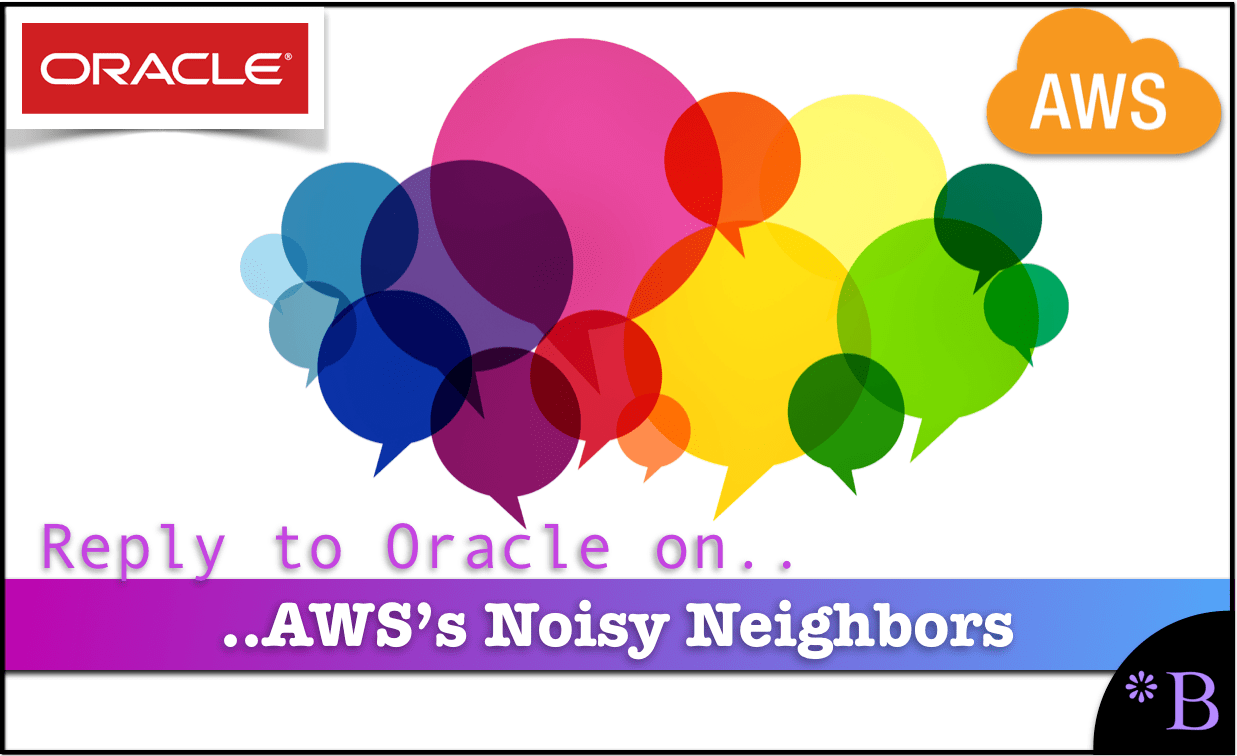How to Respond to Oracle’s Arguments that AWS Has Noisy Neighbors?
Executive Summary
- Oracle makes the argument that AWS has noisy neighbors.
- How valid is this argument against the cloud from Oracle?

Introduction
Noisy neighbors are when different customers share computing resources interfere with one another causing performance to degrade. This is another of Oracle’s critiques against AWS. The following quotation explains this “concern.”
“The other problem for Databases on AWS, is what’s called noisy neighbors. Yes, AWS does offer dedicated compute, but that doesn’t necessarily guarantee that the virtual machine running across several dedicated compute environments, aren’t being consumed by outside resources. So you can’t get consistent performance, throughput, latency, IOPS, etc. And that’s why AWS doesn’t even provide an SLA on performance because they can’t guarantee it. So as long as the service is available, even at 1% of total performance, the customer isn’t covered by any SLA.”
AWS is not only offering virtualization. They are offering a more advanced types of virtualization called containerization. AWS has its own definition of containerization.
Our References for This Article
If you want to see our references for this article and other related Brightwork articles, see this link.
Lack of Financial Bias Notice: The vast majority of content available on the Internet about Oracle is marketing fiddle-faddle published by Oracle, Oracle partners, or media entities paid by Oracle to run their marketing on the media website. Each one of these entities tries to hide its financial bias from readers. The article below is very different.
- This is published by a research entity, not some dishonest entity that is part of the Oracle ecosystem.
- Second, no one paid for this article to be written, and it is not pretending to inform you while being rigged to sell you software or consulting services. Unlike nearly every other article you will find from Google on this topic, it has had no input from any company's marketing or sales department. As you are reading this article, consider how rare this is. The vast majority of information on the Internet on Oracle is provided by Oracle, which is filled with false claims and sleazy consulting companies and SAP consultants who will tell any lie for personal benefit. Furthermore, Oracle pays off all IT analysts -- who have the same concern for accuracy as Oracle. Not one of these entities will disclose their pro-Oracle financial bias to their readers.
“Containerization is an operating-system-level virtualization method for deploying and running distributed applications without launching an entire virtual machine (VM) for each application. Container images allow for modularity in services. They are constructed by building functionality onto a base image. Developers, operations teams, and IT leaders should agree on base images that have the security and tooling profile that they want. These images can then be shared throughout the organization as the initial building block.”
The cloud is always not about performance; it is also about flexibility. To obtain that flexibility, a tradeoff can be accepted (for example) 5-10% from maximum performance. However, in exchange, one can enable new servers or release existing servers whenever they are required. Of course, better performance can be achieved on-premise or with colocation, but then the result is a rigid solution. Also, the results of having these rigid systems are well known at this point. When new servers are required, the customer has to go to the vendor and wait several weeks.
Conclusions
A mixed strategy can fit the requirements. Some rigid components, like an accounting system or a master database instance, can be on-premise. In contrast, web components, like analytics or file archives, are deployed in the cloud.
One does not need to go 100% in either direction.